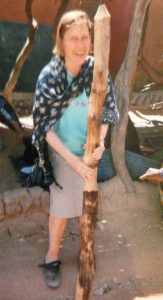How to Foster Sustainability
I feel myself standing in the village, the white trucks have just left. Space and time telescope for a minute and I am her. I am that woman, Aminata, in a village in central Mali, living from millet and goat milk, walking two hours for water each way. I look through her eyes and see fields and mud banco walls around her thatched hut. It is late afternoon and the dust is settling. I also see development projects that have come and gone that she has participated in, that her neighbors have been helped by, that have left. I feel her calm acceptance that life will continue on somehow. I am surprised she is not feeling hopeless, given how little she has. I am not her, but I work to help her.
And that gap is a problem.
Coming back to myself sitting at my kitchen counter in Prague, Czech Republic, my thoughts return to international development projects that I have technically designed and have written proposals for, others that I have monitored and evaluated. Having been in and out of villages in areas like Koulikoro District in Mali, implementer offices in the capital Bamako Mali, and donor offices in Washington DC and London, UK, I know we all want to leave behind resilient livelihoods, vibrant health, good lives for Aminata and her family. We want taxpayer and donor money well spent. We may hope she looks around with satisfaction, hope and certainty that her children’s lives will be better because we came.
Yet our development professionals’ imaginations rarely reach far enough because we only see the horizon of our projects. For we are not standing in dusty villages with NGO trucks long gone. We are sitting at our laptops somewhere in the world working on current projects. My anthropology professor praised the lessons from ‘dusty ankles’ yet Aminata’s are permanently dusty.
Her situation is what we are sequentially striving to change with road building and water projects, with reforestation and gardening projects, and this is what our funders pay us to ‘solve’. Yet we all know projects start, run and end, start run and end, and so on. We won’t be there after they end, we won’t be tasked with continuing to grow food, go to market, fetch water or raise our children there with only memories of what was taught, with aging equipment, with different demands and supports. We development experts have the luxury of finite expectations for the work we do: 1, 3, 5 years and next! Each equally pressing, funding never enough, needs always growing.
Does wondering how any project is working out now subconsciously nags you, as it does me? Are you, too, wondering which of the project activities were continued by communities after the project ended? Are you, too, wondering if any national partners continue to help this village- or not that one? Are you curious if new NGOs arriving at her village did next? Did they know the good we did, did they ask and hear what the community wants less of or none of? Do we have any way to tell our taxpayers and contributors if all their money was spent on activities that most people could continue on their own? Or not? Has Aminata’s life appreciably improved and if yes, how do we know? How can we optimize the effect, the sustained impact of each project?
By evaluating what could be self-sustained after projects ended (which requires humility and openness to set a higher bar of expectations and learning as projects rarely are designed for self-sustainability);
By designing based on what participants feel addresses their problems and can continue on their own (which may require questioning the multi-sectoral one-size-fits all scaling back risk through smaller projects with longer timeframes);
By collaborating and co-implementing projects with communities and partners such as governments staff and national researchers and evaluators and being open to listening to what they believe are priorities to design, fund and evaluate (which may require taking time to build their capacity and adapt our whole service delivery and reporting model);
By building knowledge and data systems at the community level where they are reporting results to us, where they are evaluating our work (which may require more than judging how well they have fulfilled our plans for them, rather working to build systems that are accountable, transparent and locally sustainable);
By supporting all instances of citizen engagement and governmental evidence-informed policymaking, by both donor and participant governments through initiatives such as MakingAllVoicesCount, DFID/ USAID’s Global Development Innovation Ventures and J-PAL at MIT among others.
This is a way forward for Aminata and us…. Let’s get going!

- Jindra Cekanova’s blog
- Log in or register to post comments

Add comment
Log in or register to post comments